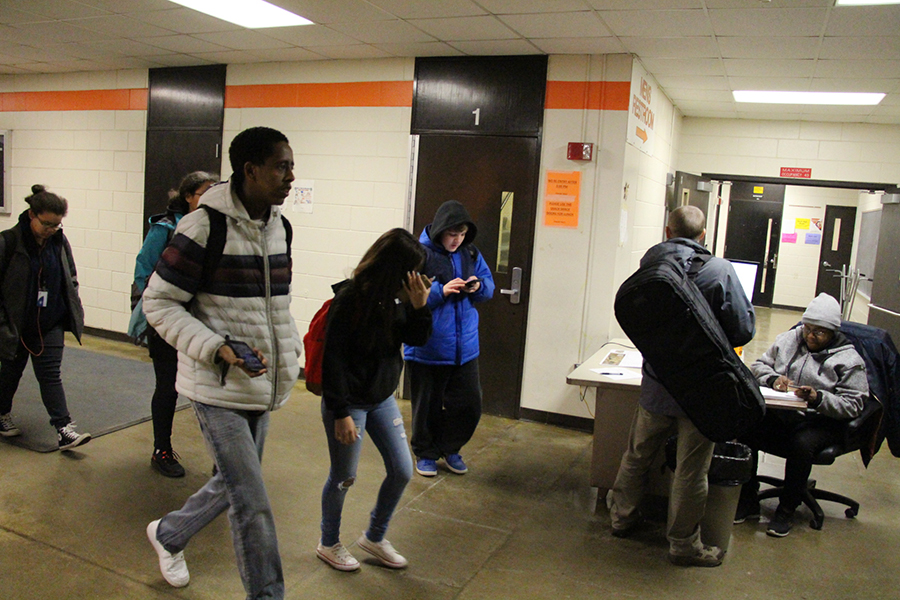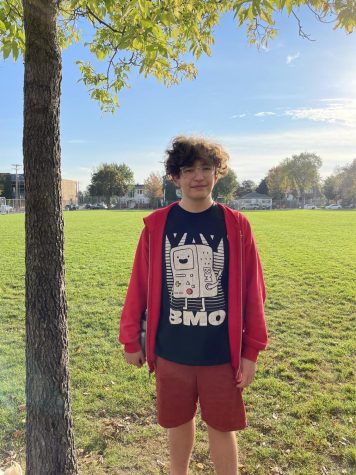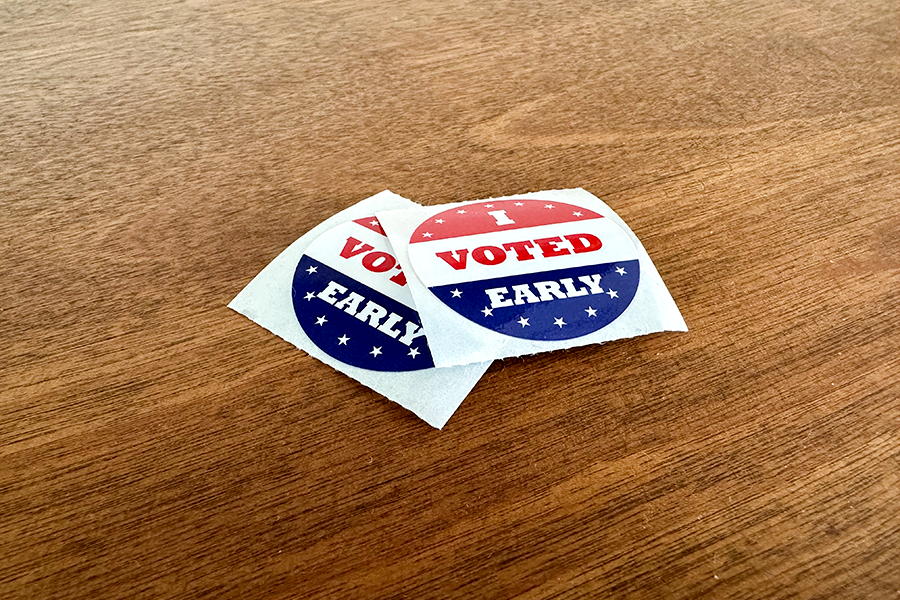Non-teacher staff share stories of distance learning
Pre-pandemic South High students walk past the welcome desk on their way into the building. Because of distance learning, interactions like these no longer take place. Alongside teachers and students, non-teacher staff members like counselors, administrators, and attendance clerks have faced unique challenges brought about by this pandemic.
December 28, 2020
When statewide distance learning went into effect in mid-spring of this year, the students of South High split off from their classrooms and began logging into school, from computers, from their own rooms. This system has been in place for roughly 8 months now, and the changes distance learning has brought to students and teachers alike have each had their good and bad points. But what about the other staff? Counselors, administrators, janitors, attendance clerks, school nurses: each of them are critical to the functionality of a school, and they too have faced their own sets of challenges with the transition to distance education.
“This is my fifth year being principal of a public school,” said Brett Stringer, the principal of South. “I think ‘weird’ is the main word… Every school I’ve been at, I’m at the front door, every single day, right as students come in the building, and not having that option… is not fun.”
Babs Gregg, a main office attendance clerk for the school, comments on how her job has changed. “It’s a bit lonely because I don’t get to see students and other staff members. My dogs do love that I’m at home, even though they bark a lot.”
Kelsey Clark, a school counselor, whose job focuses mainly on helping out students through academic and social/emotional issues, college career planning, and the like, tells of how her job has shifted. “We’re using google appointment slots to connect with students… or phone calls, or e-mails… but it’s been really, really busy.”
Stringer thinks we have lost a great deal when entering distance learning. “School is not just what’s happening in the classroom,” he said. “It’s about lunch, it’s about drama club, it’s about teams, it’s about band, it’s about that 5 minute passing period, y’know, just interacting with people.”
Gregg echoed these sentiments from a staff perspective. “I rarely ‘see’ coworkers except for Zoom meetings. We also talk via e-mail. But it is strange not to get to have lunch or take breaks together like we used to.”
“Those are the things we lose in this space,” continued Stringer. “Having the opportunity to interact with so many people around us that are different from us is a huge plus, and it’s harder to do online.”
There have also been some physical ailments of distance learning noticed by the staff. Clark touched on this a bit. “Right now I have these… blue-light glasses, because my eyes were hurting from staring at the computer. I also have a back thing on my chair because my back has really been affected, so I think people are also physically very affected by sitting, staring at a screen.”
“I’ll hear kids tell me they’re up doing homework until 3 AM, and then get up at 8 AM to start school. That’s not healthy,” Clark continued. “It’s hard to tell people to do homework after class, [and if] the homework is also online, then it’s a matter of figuring out when breaks are appropriate.”
Distance learning has affected everyone drastically. Everyone has their own experiences with it, and all you have to do if you want to hear someone else’s story is ask.






